Features/Analysis
Biu Celebrates Kadafur: The Beginning Of A New Dawn in Borno
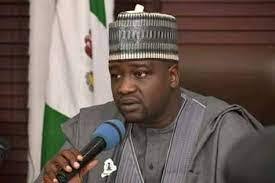
Biu Celebrates Kadafur: The Beginning Of A New Dawn in Borno
By: Yusuf Adamu
The Professor Babagana Umara Zulum led administration has continued to work towards making Borno state great again. The vision nurtured by the former Borno state governor and current Nigeria’s Vice President, Kashim Shettima sets the Zulum and Kadafur administration on a good path when they came in 2019. After fours years of indelible foot prints, the government sets a record of untold development magnitude putting Borno state on a world map.
It was as a result of this that despite political hurdles, particularly in southern Borno during the just concluded elections that the Zulum/Kadafur movement emerged victorious in the end. The duo of Zulum and Kadafur who worked as a formidable team takes every political ground with a storm. While the governor was super sweeping the northern Borno side to gain the approval of the electorates, his deputy Usman Kadafur crisscross the southern Borno part of the state in a glorious way making opposition tactics looks like a child’s play.
Southern Borno was captured by the APC to return Zulum and Kadafur in the position of leadership owing to the many achievements by the Professor Zulum led administration. The mammoth crowd that greeted every step taken by Hon. Usman Kadafur in the days of campaigns through the victorious outcome speaks volume on account of their achievements in the southern part of Borno state.
Both Zulum and Kadafur has been passionate to see that the southern Borno and indeed Borno state as a whole enjoy the dividends of democracy to the fullest. They have given attention to the yearnings of the people by ensuring the provision of their campaign promises when they came in the last four years and have now began a new day with the people of Borno state through their continuous dedication to move the state from one pillar of glory to another in their determination to make Borno state great again.
We the stakeholders in southern Borno have come together under the leadership of the deputy governor, Hon. Usman Kadafur to show loyalty and respect for the facts that we all know the government has put in place for our people. We have supported all the moves made by the Zulum and Kadafur administration on the conclusion of the assignment to deliver southern Borno for APC and we are happy we have been part of this progress and new beginning in Borno state.
READ ALSO: https://newsng.ng/alleged-employment-scam-by-an-aide-to-the-minister-of-interior/
There is no doubt that the Zulum and Kadafur administration will do better in the coming years as he has done in the area of youths development, establishment of hospital, schools and what have you across the southern Borno. The governor and his deputy are men of their words. They know their onions when they make promises and no one would take this from them. They have been very accessible to the people and lead in the place of leadership with such transparency of oath they took to govern the state with equity, justice and peace.
This is the beginning of a news era. The deputy governor was yesterday hosted in Biu Local Government Area in celebration of his Victory following all that I mentioned earlier. It was once again a gathering of the eagles. This was to show him that he has done well and the people are with him. We have been working as a formidable team and with him as our leader in southern Borno there is nothing that we can wish for that this administration cannot deliver to us.
His coming to Biu has also revived the almost lost culture of the people as traditional rulers from all the surrounding villages turnout to celebrate him in the most traditional way evoking the cultural heritage of our people. This demonstration of love has rekindle the unity of our people and help in reminding us that we have a culture of togetherness as people of southern Borno and that it is important that we keep it.
Despite the fact that he is the youngest amongst us, he has kept a level head in place of leadership and we all enjoy being his walls of support and respectful followed his leadership. He has demonstrated such qualities that makes him to have the respect, and you can see that from the crowd that welcomes him to Biu town.
Biu Celebrates Kadafur: The Beginning Of A New Dawn in Borno
Features/Analysis
My binoculars:Borno Health Sector coordination and the challenges of the risk communication pillar against emergencies
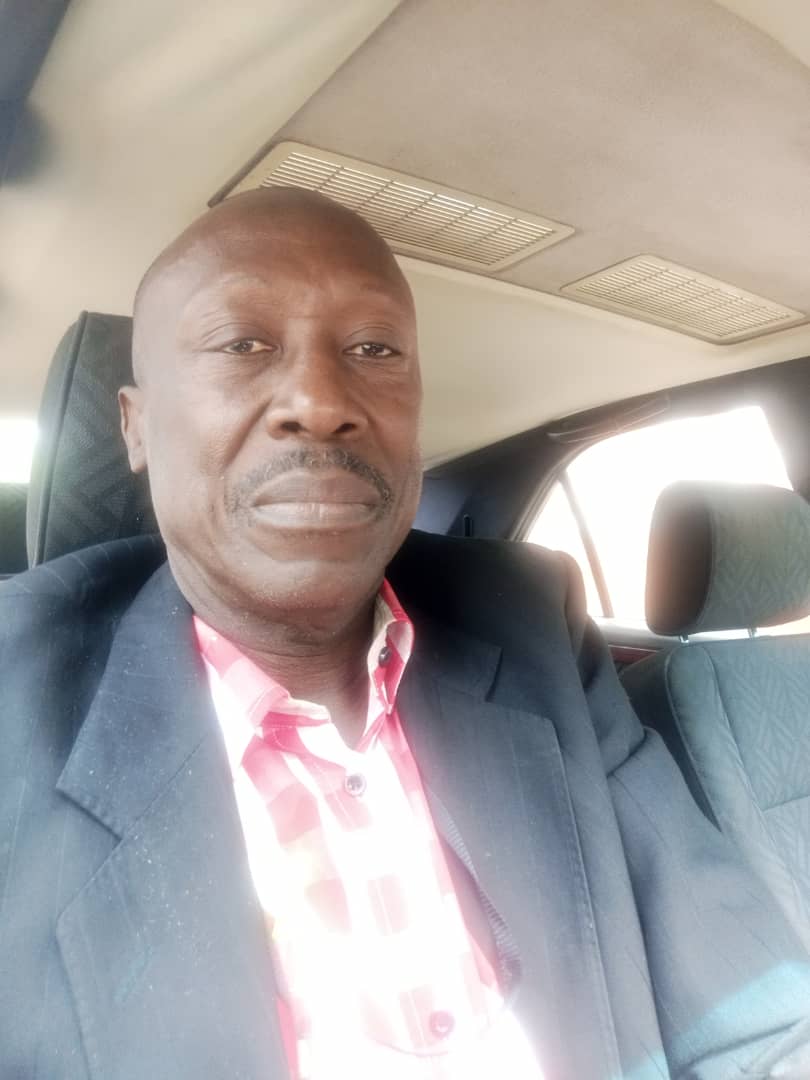
My binoculars:
Borno Health Sector coordination and the challenges of the risk communication pillar against emergencies
By: Bodunrin Kayode
Sometimes the speed at which we journalists poke our noses into important matters that concerns the truth when government authorities are involved is welcome. Especially when it involves sensitive sectors of the economy like health and the welfare of the people. And we do so when any public officer is obviously economical with some truths. And this nosing around usually annoys such powers that be like Principal Medical Officers (PMO’s) where such practitioners are civil servants. The lack of deep understanding of the essential biostatistics by the every day manager of our hospital systems equally forms a clog in the wheels of progress in elimination of dangerous emergencies in real time.
Most top civil servants in government in Nigeria usually do not like being challenged when they do wrongs regardless of their professional learning. They want to be the last to speak and it should be the final like we had during the likes of a former health minister, name withheld who always wanted to assert his weight in spite of his small stature on the union leaders who refused to be intimidated by him. He turned out to be one of the worst in the history of this country because his tenure was spiced by several strikes. Speaking after his ilks have vomited their sometimes inadvertent mistakes in a emergency meeting, is a taboo especially in the medical sector where life is involved directly. Even within themselves, a pharmacist who tries to correct the mistakes of a medical doctor is frowned upon as being insubordinate. This is because the general practitioner no matter his years of experience has been given the tag leader of the medical team because he is the doctor. This reporter was reliably informed that this dominance was given to the doctors by late Prof Olikoye Ransom-Kuti who felt strongly that the entire health family should have a team leader if it must succeed. The entire national health policy he enacted gave a strong emphasis on preventive health especially at the primary health level. And you know preventive health cannot stand properly without massive enlightenment and mobilization of the locals to see sense in all the screamings of the epidemiologists. That is why I find it amusing when some people give certain levels of reverence to world bodies ass if they are so perfect that they don’t make human mistakes.
A journalist contributing to make things work effectively in the public health sector team by trying to rectify their excessive misuse of acronyms, for instance makes some of them angry that someone is interfering in their business.These hospital practitioners rather prefer to remain conservative and seemingly mystical because that is what it should be. And with this other partners can easily shut down and remain docile maintaining the necessary amoebic tendencies needed to survive. And with this, the obvious disunity within the medical sector will continue to linger instead of moving as team players as is the case in saner climes.
Sadly the world does not work that way anymore. Some of those who express these worries hardly want to think outside the books especially when it comes to their turf even when the world has gone far in the realm of “public health communication” for instance. And most times big mistakes are made as a result of wrong communications from the so called experts from the world bodies charged with fixing health. And that has been the bane of the “risk communication pillar” of the Borno Health sector partners during coordination meetings. But thank God that for the first time in the last decade, 14 pillars have been created and public health professionals in the meeting are meant to think in one accord which is very important for the progress of the “emergency health sector machinery” which Governor Babagana Zulum is interested in. We now have these pillars firmly rooted including the sensitive “surveillance” who are the epidemiological ” “secret service” going around hunting down emergencies and hinting the clinicians before ensuring that the house is fully briefed. The risk communication or state health educators are also being straightened up to meet emerging emergencies as they come. They are collaborating with the surveillance and security which I had suggested should be made a pillar in one of our public meetings and that the head of the police hospital should be given that task. Whenever he is busy, he can always send a representative to be physically present before critical campaigns against stubborn diseases like polio for instance. Sadly the policy makers and some of those above have not seen any reason to include a uniform medical person even as observers in such regular meetings. They only look for them when they are done with their inner meetings and it’s time to send urgent vaccinations to dangerous areas in the lake Chad. The troops vaccinate the victims and return their containers. This sadly can be corrected if there is a will to apply the right courage by thinking outside the box away from the stereotype of the civil service.
What is risk communication or what civic servants prefer to call public health educators
We must keep in mind that “risk communication involves the real time exchange of information, advice and opinions between experts or officials and people who face a hazard or threat to their survival, health, or economic or social well being.” Having said that, we should be mindful of the purposes and reasons for the risk communication pillar which is very vital in reaching out to the vulnerable people we are supposed to protect in the Borno insurgent war theatre. We cannot stop cholera from moving like a dangerous wizard from one council area to another if the risk communication pillar is brutally divided as it was some years back in the state. The division obviously stems out of the fact that the big world players do not see eye to eye on several issues and that to me is sad. There is no reason for the typical competition spirit common in our clime for instance. Another mistake they sometimes make is that they send misfits as communication coordinators who end up brutalizing partners psychologically with their rotten egos instead of working with them. We had one name withheld who pretended to be a communication coordinator in the World Health Organization (WHO) yet lacked the requisite humility and knowledge that it takes to operate from that office. He was so full of himself that he started having trouble within his organization and was finally sent to Abuja to go start from scratch in his real field which is computer science. He worked together with the United Nations Children’s Fund (UNICEF) only when it was obvious I was a slight threat that needed to be eliminated. One of them said that he was aware I had documents that could implicate their dangerous corrupt and “grab it all mentality” when dealing with journalists in the theatre of war. What they forgot was that a big chunk of the correspondents chapel of the NUJ knew what they really were inside in spite of the facade of protectors of humanity they paraded around. They had stepped on so many toes of my colleagues. But sadly all of them failed woefully in their satanic plot to chase shadows where there were none. They are all out of the war theatre now.
Why the risk communication and health educators in world bodies must continue to work together to strengthen the Borno health sector
The WHO and UNICEF communication experts must work together as a team under the supervision of the state ministry of health and not the other way round. What we had even up to early last year before the flood was two world bodies flexing their muscles in different rooms, churning what they thought was best for Borno but which is usually confusion for the crudely trained health educators. That is a wrong and it must be reversed as quickly as possible if the risk communication should be uplifted to where it should be. You cannot because you are coming to spend donor funds treat people as if they are beneath you. It’s not right. Whatever meetings they want to hold in their respective agencies should never rubbish the risk communication pillar meeting which should have only one head from the state ministry of health who speaks for all of us during critically challenged periods of emergencies.
The cliche of he who pays the piper dictates the tune can’t work in this instance when we have a war at our backyard. It’s a boring cliche that has killed this country and brought us to the sickening level we find ourselves now where humanity is thrown to the dogs. It is not permissible for UNICEF and WHO to speak on behalf of the state at all times. That is a wrong which I believe even the state coordinators know should be corrected. What happens when that fellow is transferred? The head must be a ministry staff and both agencies must answer to him. At least that is the ideal we subscribe to. The non governmental organizations have already fallen in line. It’s only the big players that are rustling feathers as if they are infallible. Sometimes they feel they are too big to take instructions from the government. But this governor is a no nonsense man. You rather do it his way or get out.
Within the almost comatose health sector which existed in Borno from 2009 when the real insurgent war started, health practitioners had been called to account to the people they claim to be dishing out dividends of democracy to even if it is on a humanitarian level which makes it free. And I believe it’s because of this accountability that the sector partners meeting was formed to evaluate and make progress. It’s about ten years now into the rebuilding of the Borno health sector and some of us who have been around since then can gladly say well done to all the managers who have passed through the Emergency Operations Centre (EOC) in maiduguri till date injecting their own expertise in one way or the other. The world bodies inclusive and the myriad of non governmental organizations. A special dedication to Dr Simon who was holding the fort in the EOC till the Trump hammer came down on everything that makes sense to right thinking people in the world.
Attracting more media practitioners into the risk communication
Colleagues, of a truth, the media practitioner is not out to witch hunt anyone but purely to ensure that every one accounts for his stewardship as leaders in the sector. A practitioner’s presence in the risk communication or health education business in the polio sub sector is to assist in disseminating the good news when there is need to do so. If Cholera has killed hundreds in the last ten years, he says so. Why? So that the people will take corrections from the way they have been living to what the health authorities have designed for them to stay alive. This is because no Commissioner of Health or trained doctor wants his patients to die out of ignorance. So they need the risk communication or health educator’s latest skills in contemporary media practice. And if one lacks knowledge of the workings of the media even if the fellow is from the WHO or United Nations Children Education Fund (UNICEF) he will surely fail in most of his plannings as it concerns the people. Media related intervention is needed in every profession that is involved in communication. From security to teaching to medicine. You cannot succeed in modern medicine without effective communication or even the media. And when I emphasize media, I am not talking about radio which is believed to be the widely used to hear from government by the northern illiterates in the country. The so called radio which is believed to reach at least 50% of the population is a luxurious instrument now in Borno because at least 40% of that 50 or 60% which could be reached if their surrounding transmitters have not been blown off by boko haram cannot afford to buy a mini radio of N1000. With the floating of the naira, this figure may even be an understatement in the market.
TV is ruled out for the most vulnerable who even if you give a free radio set to listen to cholera or covid jingles will rather sell same to buy his immediate needs. So how do we correct these lapses? Simple. Involve the media more proactively by creating of health desks in the media houses. Health desks cannot be just one person. I made this point during a round table at the NUJ in maiduguri recently and someone showed me a health correspondent in a radio station. The fellow obviously does not know the difference between an ideal health desk and just one correspondent. For maiduguri, just one correspondent covering emergencies and the entire health ministry is not right. In fact, that is a huge joke as long as insurgency persists. A minimum of three to five reporters should form the fulcrum of a functioning health desk. A senior correspondent or line editor and a bevy of reporters ready to cover the primary, secondary and tertiary centres were things happen daily. One person is just a correspondent not a desk and is grossly inadequate. You do not parade just one person to handle emergencies and non emergencies it’s a sick joke that can fly anywhere without a war but not in Borno, Adamawa or Yobe (BAY) states because of our peculiarities and mortality rates. The creation of health desks in the near future will produce a massive army of professionals ready to handle the risk communication even in the entire BAY states. That is the ideal. And it is very much possible to handle if the Commissioner visits the general managers and advocates for their creation with support from them. Getting a sound professional as information officer in the parent ministry of health will also help because it is he who will be the go between after the courtesy calls which speaks more than a mere memo. Translators in local languages will fall in line easily. Not just one or two people serving as health education officers in the entire state of 27 council areas.
The voice of the journalist as the fourth estate of the realm is equally the voice of the people. So when they call for accountability within the news managers about the health sector for instance to appear before them in the Press Centre, they are simply saying account for your stewardship before the people. They do not mean to disrespect anyone who is a “big man” who may not want to appear before the gentlemen of the media as if they are before their Lordships in a court of law as it were.
Risk communication practices within the Borno health sector
Risk communication in Borno particularly can never succeed without the major imputes of journalists within the Health sector. This pillar equally needs the massive support of the translators in the programs department which may not necessarily be journalists but media practitioners in their own rights. We cannot go to northern Borno and be speaking English with resident idps for instance. Such messages must be knocked down into Kanuri not even Hausa because these are people who do not understand the Hausa language no matter how international you may think it is. These are some of the challenges that have characterized the health sector meetings when handling urgent challenges like Cholera. The Borno radio television can boast of translators in shua Arab, Kanuri, kibaku, Bura, and margi languages any day we need them. Not this Hausa charade which I see as a lazy man’s way or handling serious issues here. Borno is not katsina or Kano. Borno is peculiar so attention should be paid to mobilization issues.
The world bodies will be harming the recipients of messages if they sit down in Abuja and draft messages for the risk communication sub sector only in English and Hausa and forgetting that there are about 15 dialects in Gwoza alone some of who barely understands the Hausa language which was virtually forced on them by virtue of recolonization. That could be applicable in the north west of the country surely not north east and central. There are always willing hands in the media ready to help out to produce these sound bites if management makes proper inquires. You do not go to Limankara in Gwoza and start speaking Hausa if you want the residents to drop some daring inhibiting habits which invites killer diseases. You look for someone who understands their dialect and make him do the translation or speak after you have spoken in Hausa. That is the trick.It would sink better than Hausa. These are the solutions which would help us from watching people die when we could help keep them alive.
The Borno health sector is in a critical buildup situation in which some forms of basic communications must be handled by local people who studied, communication, journalism or even some form of social science or public relations. Risk communication is not something you can handle simply because you did general studies in medical school. Far from it. Its something you must study to apply same so you save yourself from the pains and embarrassments being faced when it comes to the nitty gritty and you are watching people die from cholera, COVID-19 or diphtheria. That is why the intervention of the ministry of health into the various newsrooms by way of “lobby” for a news desk is very pertinent. No Radio general manager in Maiduguri or Biu will refuse sponsorship of reporters and translators for refresher courses in the health sector as is applied in the more developed climes. Send them abroad for three months and by the time they return, they will forget politics or sports and follow health as if it was their initial calling.
That is the only way we can attract more hands on deck to perfect further the myriads of mistakes being made by the risk communication pillar in the Borno health sector. I have tried severally to drag in my colleagues to join me in the sector meetings but they do not see the attraction to come in because of the ultra conservative mentality of some practitioners in government.
We have to create the attraction by following the tips I gave above. We are very much still in an emergency. So nothing is too big to be done to attract more practitioners in the health education sector.
Finally, now that we all know that a lot of damage has been done to most of our radio transmitters in the state rendering the capability of the old fashion radio to get to at least 50% of the populations useless, the plan B option left to the sector for emergency enlightenment especially in cases of polio is interpersonal communication and that is done by using vehicles to all the secured crannies of the state whenever there is an emergency to ensure that the people get to know what is going on. It’s obvious that less than ten percent of this 50% of the affected population can afford phones. Let’s say we teach them how to tune to their radio in their phones, how many of them will be able to listen to jingles in their native dialects? When you have at least 70% of the rural population of the residents as stark illiterates as alluded to not too recently by Governor Babagana Zulum, how then do you continue to reach out to them in English or Hausa? It is the duty of the risk communication people to size up the environment they want to penetrate and communicate in the language they will get maximum effect and not waste the scarce resources in radio stations that package programs purely for the elites. English language should be made a secondary language of communication in rural Borno until the war ends and emergencies subside. Too much English can never eliminate the stark reality of “zero dose” of which Dr Mohammed Khalid lamented in a recent sector meeting for instance is increasing. In fact he expressed the fear of new cases coming from the other side of lake Chad and how to stop this by using appropriate communication skills.
Lastly, there are many areas that vehicles may not access in the local councils of Borno State. The director of information, in the ministry of information can be drafted to work with any of the pillars he is wired to handle. As they hold their sector meetings at council level, he should be able to produce his own army of translators who will be on standby to enter any corner where strange diseases are coming up to kill people. And they should be able to feed his team or report directly to the state health educator for onward transmission if they can’t get their pillar heads directly. Trained risk communicators or educators volunteering during campaigns in the entire council areas should not be less than 54 while the state should not be less than 20 very fluent in diverse local languages and dialects of the people. That is the ideal instead of balkanizing everyone into kanuri and Hausa. The Commissioner of Health should be able to liaise with his colleague in the transport ministry to ease the stress on the resident health communicator in each council area in worst case scenarios. By resident I mean each council area should have one personnel trained for the job because all the resident media houses in Borno cannot be able to supply enough personnel for the job. The risk communication pillars should be given bikes and megaphones to get to those safe remote places and shout on top of their voices if need be. Only this change in pattern can change the narrative of any wicked emergency that dares rears its head beyond 2025. That is the drill for excellent coordination between the health educators, mobilizers and risk communication pillar in 2025 and beyond.
Features/Analysis
UMTH: A need for assistance due to Maiduguri’s terrible flood
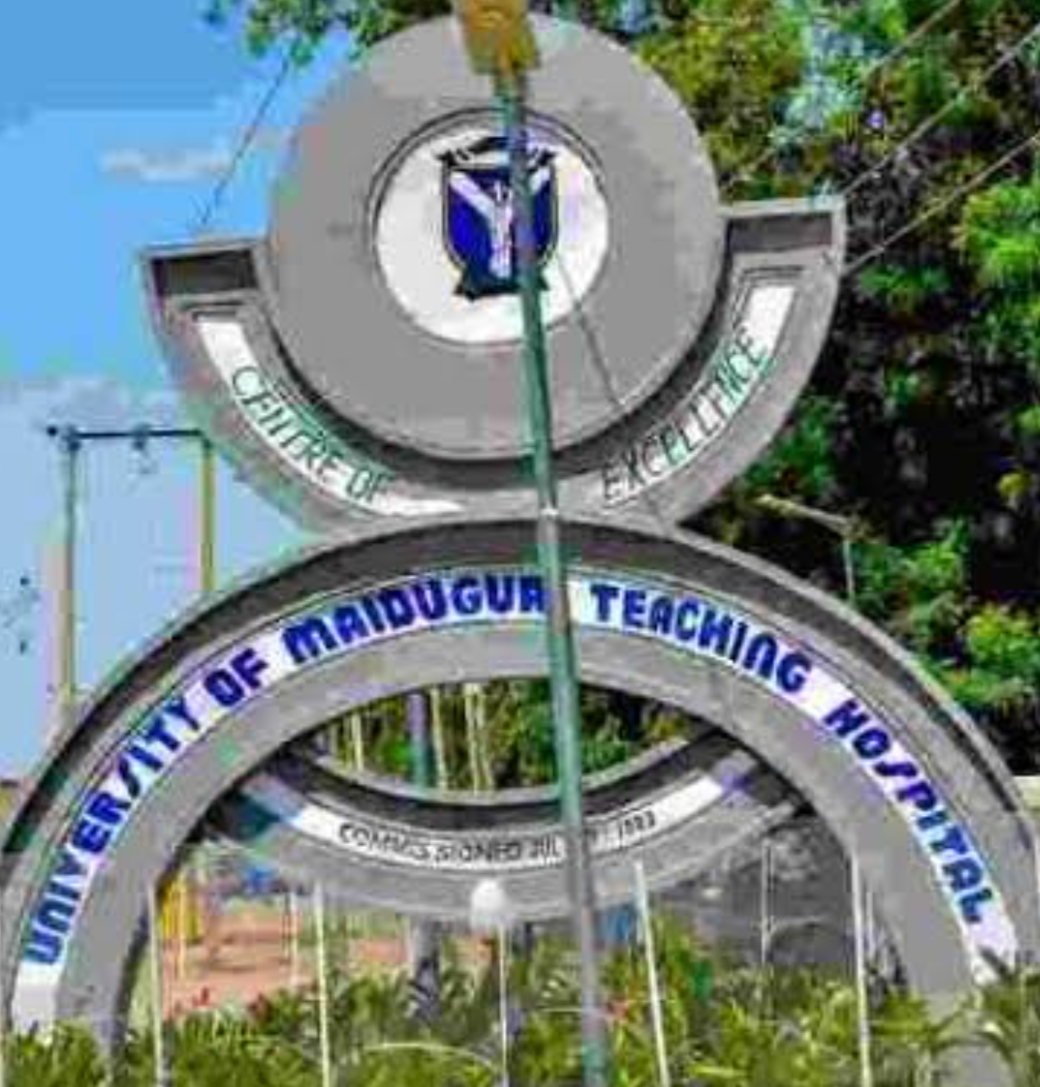
UMTH: A need for assistance due to Maiduguri’s terrible flood
By: Dr. James Bwala
Those who recently visited the University of Maiduguri Teaching Hospital (UMTH) expressed dissatisfaction with the flood-soaked equipment and the enormous amount of money required to restore it to operational condition. This is particularly true of the machines in the radiology department, the cancer center, the hospital stores, the child institute, the trauma center, the burn center, and numerous other centers. The largest hospital in sub-Saharan Africa, with a capacity of over 1300 beds, takes pride in it. These have exacerbated the management’s efforts to devise a plan to restore UMTH to its pre-flood pedestrian status and ensure that it regains its position as a behemoth on the West African pride stage
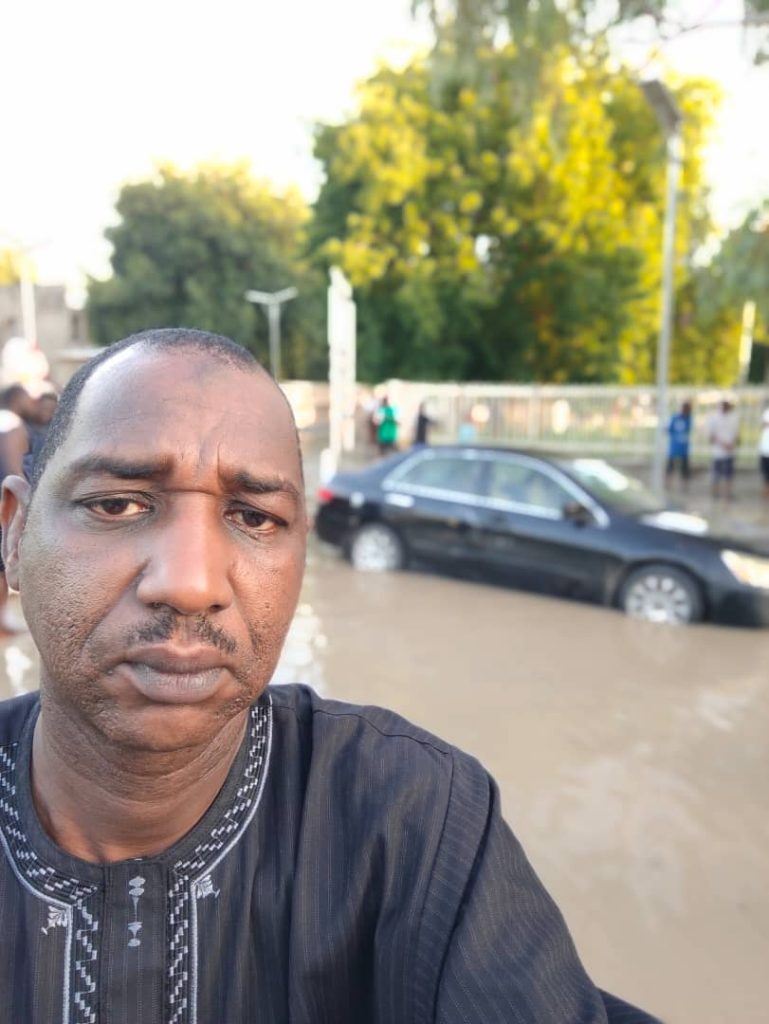
In fact, the University of Maiduguri Teaching Hospital (UMTH), which has been badly damaged, has made urgent appeals for help in response to the recent flooding in Maiduguri, Nigeria, after the Alau Dam, a vital water supply for the city, collapsed, Maiduguri was hit by unheard-of flooding that flooded half of its land and impacted more than two million people. Due to significant damage to its infrastructure and equipment, the hospital—which is essential for medical services in Borno State, Nigeria, and west Africa—was shuttered for two weeks. Basic services will soon restart, but full operational capacity is still questionable. As a result, the government, as well as motivated individuals and organizations, must take the necessary actions to make full operationality a reality.
Beyond just providing healthcare, the humanitarian crisis has made pre-existing issues like food shortages and displacement among vulnerable groups worse. Around a million people have been affected by the floods, and there have been reports of a rise in family separations, gender-based violence, and illness epidemics that need immediate medical attention. As a result, UMTH, which offers incalculable assistance to families attempting to restore their health in the face of tremendous destruction, needs immediate support.
Read Also:https://newsng.ng/special-report-umth-professor-ahmed-ahidjo-a-historic-shift-in-hospital-management/
This circumstance emphasizes how urgently governments and international organizations must coordinate their assistance efforts. For the purpose of meeting urgent needs in Maiduguri and the adjacent areas, the United Nations High Commissioner for Refugees (UNHCR) is actively looking for more resources. To guarantee proper healthcare service returns at the UMTH, the UN agencies and other INGOs should also concentrate on the University of Maiduguri Teaching Hospital. The long-term recovery prospects for people and healthcare facilities like UMTH remain dire in the absence of prompt action and consistent support from multiple stakeholders.
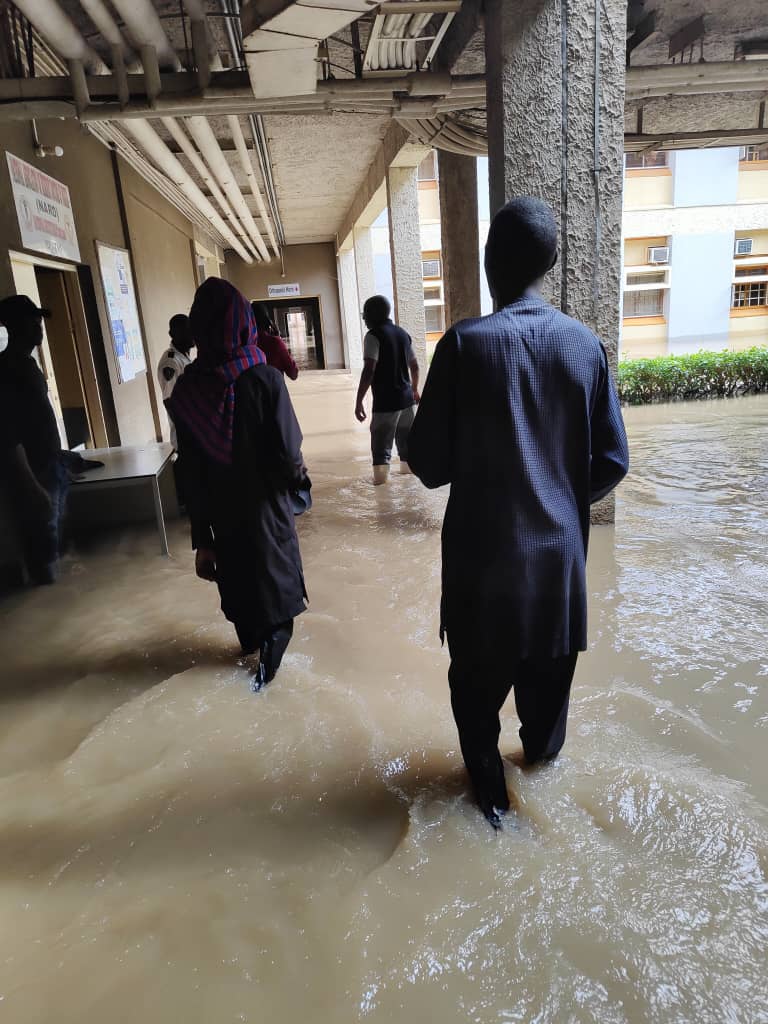
It is crucial that government agencies and motivated citizens work together to support organizations like UMTH in the face of frequent flooding. In addition to displacing people, floods destroy livelihoods, resulting in a vicious cycle of poverty from which it is difficult to break. This poverty raises the likelihood that healthcare services will collapse, especially when diseases are spreading. All hands must be on deck to specifically look into the needs of health institutions at this time to lessen the impact of disease outbreaks as Maiduguri has started to experience, as a breakdown in medical equipment will further short-lived efforts in managing such epidemics.
In order to prevent the degradation of vital medical services, UMTH management has called for safe collapsing equipment due to flooding. Government agencies and concerned citizens must unite to offer the University of Maiduguri Teaching Hospital (UMTH) immediate support and resources in their fight against flood damage. As we have seen at the UMTH, the teamwork may act as a beacon of resilience, demonstrating the effectiveness of shared accountability and group efforts in reducing the effects of disasters.
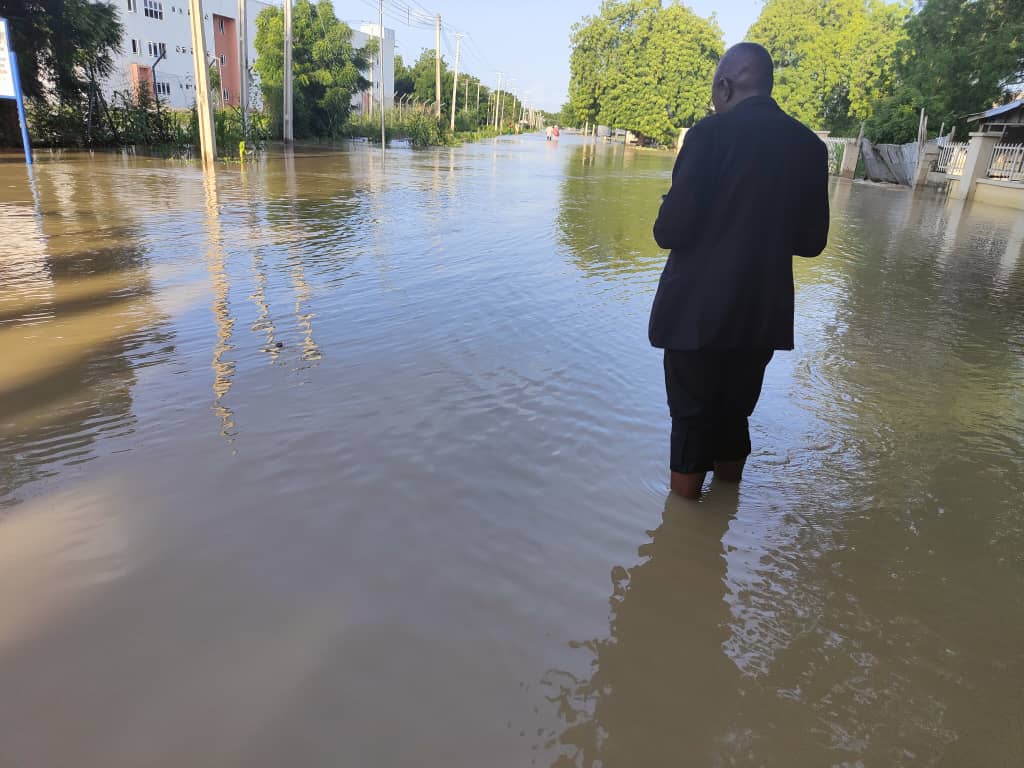
In addition to guaranteeing the continuation of vital healthcare services, this united front promotes a culture of readiness and adaptability that goes beyond the current crisis management of healthcare services at the UMTH due to equipment shortages. Furthermore, UMTH’s ability to withstand future flood events can be greatly increased by addressing its infrastructure vulnerabilities through targeted interventions. This will protect public health and minimize medical service disruptions, which is especially important for the people of Borno State at this time.
In order to do this, government organizations must give top priority to financial and policy measures to strengthen UMTH’s infrastructure against flood threats. In addition, enthusiastic people can help by participating in community-based projects and fundraising campaigns that directly benefit UMTH, thus enhancing governmental actions. We can establish a sustainable framework that not only tackles current issues but also establishes the foundation for long-term resilience against future calamities by cultivating a strong collaboration between governmental programs and community-driven initiatives.
Dr. James Bwala, PhD, writes from Abuja
UMTH: A need for assistance due to Maiduguri’s terrible flood
Features/Analysis
My Binoculars: Of the ten-day protests, the health sector, malnutrition, and the failure of the government to care for the ordinary and vulnerable in Nigeria

My Binoculars: Of the ten-day protests, the health sector, malnutrition, and the failure of the government to care for the ordinary and vulnerable in Nigeria
By: Bodunrin Kayode
A recent critical debate within a platform of journalists of like minds prompted me to peep into my binoculars after a long absence. I usually enjoy such healthy debates, especially when we are trying to set an intricate agenda for ourselves to get the government at all levels to work harder for the people to whom we have sworn allegiance. work for and make comfortable. My attention was drawn to the fact that the Borno state government had to rush to take care of a vulnerable family whose breadwinner had virtually lost financial control and was unable to feed his family, leading to acute malnutrition affecting his kids. It was a pitiable sight if those grim pictures of Kwashiorkor I saw were the exact impression of what happened to the family. It was a clear indicator that food itself is medicine, and hunger can threaten and destroy the very health sector in Borno State and Nigeria if caution is thrown to the wind. Food is spiritual to Africans, so do not use it as a political weapon. get people to submit to you. They will surely fight back in due time.
Such sights are really not new in Borno within the last decade of my reporting of insurgencies and the health of the people. This is because the Boko Haram scourge actually gave rise to many of these ugly sights, which I have seen myself while hobnobbing with the health emergency. sector at the World Health Organization (WHO) center by the eye clinic on Damboa Road, Maiduguri. But this sight I saw, which led to our debate, was likely driven by the recent economic policies of the federal government against the masses of the country. One of the policies
which I have nothing against except for bad implementation, is the removal of subsidies on petroleum products, especially premium motor spirit (PMS). I believe the removal was done in the interest of the masses to torpedo the ruthless power of the petrodollar cabal, which has been feeding fat on the Commonwealth of the people. As much as the intention of removing it was good, the government’s fatal mistake, however, was that it was too sudden. It could have been done in a planned in a staccato manner so that the common man and the poorest of the poor will not have to be so devastated as to lose their economic powers to feed their families. Many pensioners who could not buy drugs for terminal illnesses have gone to the great beyond in Northern Nigeria because of the sudden hike in drugs. A retired teacher and widow I knew directed her grown-up kids to take her home when the doctors told her of the failure of both kidneys and that she would have to undergo dialysis to stay alive. She has since been buried. because the traditional herbs she resorted to to fix her kidneys could not help her advanced case of failure. Such cases should have been funded by the federal government without batting an eyelid.
The second unnecessary slap on the ordinary resident and the poorest of the poor is the weakening of the naira by a shark-like fiscal policy called flotation induced by the International Monetary Fund (IMF) and the World Bank, who feel that development economists in Nigeria advising previous governments to resist it were so naive not to know that our naira is overvalued. One wonders how much these foreign “economy killers” know of Nigeria that they will need to guide our fiscal engineers on such a devilish policy that is virtually killing people, which is why there was a need for a ten-day protest to send a message to the federal government to reverse some of these corrupt-laden policies they have unleashed on our common purchasing power. Within the fiscal rhetoric of development economists in the All Progressive Congress (APC)-controlled government, the constant importation of petrol into an oil-rich country like Nigeria itself
cripples the naira. Swap deals of crude oil with powerful cartels, which have been estimated to be beyond three billion dollars, are a major clog in the wheels of economic progress. It is one of the reasons why the Dangote refinery is not receiving enough crude to pump. into the system and bring down the price of premium motor spirit (PMS). The argument of some of the big players in the industry is that Dangote is a newcomer, and he must wait for his turn to be lined up in the queue like every other person. I find such arguments myopic and insulting the common man whose relatives died in the cause of the last protest. Sadly, so many questions have been bugging the minds of helpless, right-thinking people in the country concerning the myriad mistakes of the federal government. Questions like, Why go further to float an already weak currency due to fiscal mistakes to achieve a target that aims to destroy the foundation of the country? Who are those angry with Nigeria for having one of the cheapest pump prices within the Organization of the Petroleum Exporting Countries (OPEC) block? Are we sure some people somewhere have not sat down to plot to torpedo the biggest economy in By pulling the rug under the economic intelligence agencies, who should give contemporary Intel on blue-chip companies like NNPC to the government? And why are the young people so angry with this government?
which campaigned to be better than that of its predecessor? What is the role of too much party politics and the alleged insulating of the leaders from the economic reality on the ground?
Contribution of the partisan politicians and their party mechanisms to the impoverishment of their people
Since 1999, the political party machinery has always been the spoiler and hater of the middle and lower classes of people everywhere. They make so much free money from the weak institutions in the system that only those who can sing “dangerous songs” while looking into the eyes of
The political powers that be may be allowed to save the situation. That is, if they are not punished for daring them like they did to Senator Ali Ndume, a teacher turned politician, for speaking the truth to power. Most watchers of the polity were bewildered by the decision of the APC recently, who never saw anything right in a fearless politician making a fair comment against perceived wrongs of his party in sorting salient issues in the polity, including hunger. It is my opinion that
He only wanted his president to free himself from the “Lagos paddy paddy” cage they locked him in and come out to see the litany of economic woes that even his own people suffer from. That is my perception of what happened, surely not the mundane way they perceived it. It was an anti-party outburst in his criticism of wrongs in the “Arise” interview. The presidency should not start and end on the desk of the chief of staff, Oga Femi, who is a Lagos man like President Tinubu. Nigeria is far bigger than Lagos and the paddy’s of Lagos put together.
Let’s ponder some unfortunate credibility issues affecting the APC, which is why former President Obasanjo posited recently that, left to him, some of the leaders walking inside the corridors of power should
be in jail by now. By the way, who is the head of the ruling party, and what are his antecedents now? They cannot claim to be saints far different from the Peoples Democratic Party (PDP) after the maladministration of the last eight years, in which corruption was celebrated in another big way. They have now decided to unleash a chairman. of their party, who had suffered from well-reported grievous credibility issues himself when he was a governor of Kano State known to polity watchers in the country. Now we hear that the hoodlums who infiltrated the ten-day protest in Kano have stolen the record of evidence of corruption against the former governor turned party chair. President Obasanjo indeed cannot be extricated completely from the wrongs of some of these leaders who have held sway in power, like former President Goodluck Jonathan, whom he single-handedly chose to be deputy to President Yaradua but who was too weak to stop the open stealing practiced under his watch. The litany of woes orchestrated by corruption continued and stank heavily under President Mumamadu Buhari, while Betta Edu announced it under President Tinubu and received a suspension. Obasanjo is well aware that neocolonialism is real and may not be the only solution to a system that has been completely destroyed by the self-aggrandizement of the commonwealth of the nation by a few hawks who have now formed a shark-like petro-cabal already strangling over 200 million Nigerians to death with sudden lack and increased poverty through Petro politics.
Open stealing of palliatives by some ruling party stalwarts in Borno
I have a neighbor of mine who is regarded as the “woman leader” of the APC in Maiduguri and who gets several bags of palliatives each time they are declared by President Bola Tinubu or Governor Babagana Zulum to ease hunger. I would withhold her name for now because, even though she’s half-illiterate, it’s her wrongdoing that one is bothered about. She often sells some of the grains and keeps some in her home for consumption. Mark, food sharing in Maiduguri started long ago as a result of insurgencies, surely not due to economic reasons. And that is
Why, when sharing This middle-aged woman gives only those in her area loyalty, regardless of which party you belong to. Especially those who can lick her dirty boots. A generation of people in this area on the outskirts of Maiduguri who have nothing to do but wait only for Palliatives from the party and non-governmental organizations rely on her support, which she gets from prominent party leaders like Kakina, who is the mother of all women in the party. Sadly, this Chibok-born woman got her connections from stalwarts she grew up with and still
interacts with making it look like it’s her personal efforts that are feeding the vulnerable. She even named one of her sons after one of the party buffs to cement her loyalty within the corridors of the Borno APC power space. These kinds of perverse people also wait for non-governmental organizations (NGOs) who come around sharing food.
tickets through their Bulama, who residents say is as dangerous as a fox, having sold most of the lands and houses in the area with the support of one of the influential sons of the powers that be in the land. That is how far some people in party politics can go in the enslavement of their fellow residents using food that should be shared freely to assist rather than to entrench the scourge of hunger.
Party stalwarts like Senator Kaka Shehu, who used to fight for the poor through these kinds of people, would be shocked at the number of people that have been stripped bare of their livelihood by the current economic policies, yet they can’t get palliatives of seeds to even farm. during the rains if they are not related to the party. We are talking of the same party that brought the full weight of the dangerous conditionalities of the IMF to Nigerians. Sometimes one wonders who told them that our naira is so overvalued that it must be floated to reach their target of at least 5000 naira to a dollar or more. The floating of the naira by the central bank may have had its good and bad sides against residents. But I believe the bad side is higher because even the hard drug sellers destroying the young people of their party on Baga Road now complain of a bad market due to the naira devaluation. Party Tugs now ration the rate at which they buy weeds in the open market.
Why was there increased violence in some areas of the Borno capital?
It was quite clear that Borno had its fair share of violence during the protests, and sadly, eighty percent of those who jumped into the streets were kids who may not know even the reasons for the protests in the country. It was unfortunate that some people had to die considering the fact that Borno is battling with insurgency, which is
yet to come to an end. I don’t live in Bulunkutu, but I can tell you that one of the reasons why the recent protest against the government in Bulunkutu was so intense was because some stalwarts allege that the same party has not been fair to most residents there. As a matter of fact, even up to Ngomari since the death of an APC woman leader in June 2023 who died after a crash inside a Keke napep. Of course, she died while seeking medical treatment at Umaru Shehu Hospital under under the watch of Dr. Emmanuel Philibus, the Gwoza-born, strong man who the governor vowed would be sanctioned but is still there with no public explanation for his misdemeanor.
Intel sources stated that 90 percent of the palliatives meant for people in the hinterlands of Bulunkutu never got to them, and the people have been very bitter with the APC ward and local leaders out there. Even some party leaders beyond the old railway areas inside Bulunkutu were livid with rage when the party suggested that the very first palliative sharing for them last year should be done at the Bakasi idp camp, very far from “yan nounou” or the deep hinterlands, where 200 naira for the “Akara” snack is no longer enough for breakfast like before. That was why, at the instigation of the young people, the governor It was easy to start from there. When other wards in the metropolis saw this, hell was let loose even after the governor had called them into the multipurpose hall in the government house to beg for peace to reign and then the 24-hour curfew. And this window dressing was done by renting a home for the Kwashiorkor kids and their parents in Shuari. But are they the only ones suffering from malnutrition? The answer is no. The truth is that the party leaders are the very ones who unleashed this frightening malnutrition on their own. It’s a garbage-in and-out situation. You cannot vote for an ex-convict like
The Americans are trying to do it simply because he has a party card and expect him to behave in the right way when he gets into office. You don’t expect known thieves, based on the Economic and Financial Crimes Commission’s (EFCC) record, to behave any differently from what they know how to do, which is to steal. Which is why I agreed with one of the debaters that the stalwarts and party leaders should take the blame for any wrong done to the people at the bottom. If they don’t, they should be seen as insensitive to the plight of their people. Now
The party wants to window dress just one family for the world to see instead of doing the right thing and refusing to scapegoat anyone who does the right thing. The way to help the vulnerable is to cut the party system out of these palliative tasks and allow religious
organizations like the Christian Association of Nigeria (CAN) and (JNI) and the civil society to do the job of sharing raw food stuffs when it is necessary. It is obvious Governor Babagana Zulum may not fully trust his own party machinery when it comes to sharing food stuff, which is why he does most of the sharing himself instead of allowing what should go to the common man to pass through the depraved minds of some party tugs who are regarded as leaders in the 27 council areas of the state.
Pre-empting the next protest with solutions, not tough talking speeches
As for the ten-day protest, I would say its aims were partially achieved in the sense that those who were not telling President Tinubu the untruths of the flotation of the naira and what it had done to the country were silenced. The president and his wife, Remi, would have I watched these protests live from their living room inside Aso Rock, and I can imagine Aunty Remi telling him to do something different from what the fiscal engineers like Wale Edun packaged by the West are saying. I don’t believe President Tinubu can be caged because he is an old businessman who understands all the intrigues behind the controversial oil industry. He is also coming from the home of a market woman and a wife who understood the price of gari before 2014, and now that it is about N1500 and more for a small paint cup in some states. Above all, he does not have a docile woman in his life as a housewife. Remi was and still is a senator of the Federal Republic of Nigeria. She only stepped aside to assist in the supervision of his life in the State House, considering the critical nature of his health. She is a Senator of the Federal Republic on leave who would dare get to the market for herself to buy stuff, but for the overprotection of some indolent security details who would remind her of her kitchen staff. But I believe she knows how much a cup of gari is in Saki, Abeokuta, Dutse, Okigwe, or even in the Okumagba area of Warri. She
should be telling his excellency the truth about the anger of Nigerians over the high cost of food or drugs to patch their health as a result of the devaluation of the naira. She should be advising him on how to avoid offending the young people so that they will not shut down the country for a second time. That will not be.
pleasant at all.
One is happy, however, that one of the aftermaths of the protests was the announcement by the government that very soon, all graduates of tertiary institutions would be given a stipend until they got a job. That is an exciting development that should have started long ago. In fact, it should have gone side by side with the National Youth Service Corps (NYSC), but it is not too late. We would also suggest that the health insurance scheme be adjusted to cover free of charge all seniors from the age of 70 and above. As a matter of fact, a special fund should be created to take care of the healthcare of seniors over the age of 65. There is no need for any contribution; just show up at the hospital with your national ID card, and you are registered. As long as one is a senior, treatment should be free and on the account of the government in all 36 states. That would extend the life expectancy.
of residents in the country.
Obvious solutions to hunger and homelessness in the land
As for food security, nobody should be allowed to go to bed hungry if they possess a national ID card. Billionaires in the country should be called upon to urgently contribute to building “soup kitchens” all over the country. We can start with 500 of them for a start in the
country, but we need at least a thousand kitchens scattered in the 36 states of the federation to kill hunger and malnutrition. That is an average of about 27 outlets per state, regardless of the council areas and the population. Rich states like Lagos can have more, depending on the council areas. The intention is to make sure that every child of vulnerable age can branch, stay in line, eat a good meal, and go home. Soup kitchens should be open till midnight daily and by 5 a.m. for breakfast, so they eat before going to school. As a matter of fact, the building of soup kitchens for the vulnerable to go eat daily till the end of the first tenure of the government would be a welcome development. At least that has always been the advocacy of Senator Ali. Ndume for a long time before now. Hunger doesn’t know shame, race, tribe, or creed. The founders of the United States knew this long ago, which is why they now have support for any form of vulnerability or disability. With the help of more than 61,000 food pantries and soup
kitchens, food banks provide some 46 million people with free food each year in the US. Tens of millions of volunteers regularly support the system by donating time and money. Our population is over 200 million now. If we don’t have food kitchens, pantries, or banks to supply people with food, then we will be damned in the near future. This is a path Nigeria must follow to avoid young people feeling cheated and deprived of their common wealth by a few criminal minds stealing billions annually yet flaunting the same ostentatiously to their faces. This was the same issue that affected Kenya before the last straw fell to the ground. From what happened in Kenya, our political class should know by now that these young people know exactly where their treasuries and hearts are stored. When the food
kitchens are cooking the meals, the idea of homelessness can easily be assessed, and special hostels can be built where young people will begin to squat until they can get a decent job and rent their own
houses.
My Binoculars: Of the ten-day protests, the health sector, malnutrition, and the failure of the government to care for the ordinary and vulnerable in Nigeria
-

 News1 year ago
News1 year agoRoger Federer’s Shock as DNA Results Reveal Myla and Charlene Are Not His Biological Children
-

 Opinions3 years ago
Opinions3 years agoTHE PLIGHT OF FARIDA
-

 Opinions4 years ago
Opinions4 years agoPOLICE CHARGE ROOMS, A MINTING PRESS
-

 News1 year ago
News1 year agoEYN: Rev. Billi, Distortion of History, and The Living Tamarind Tree
-

 Columns1 year ago
Columns1 year agoArmy University Biu: There is certain interest, but certainly not from Borno.
-
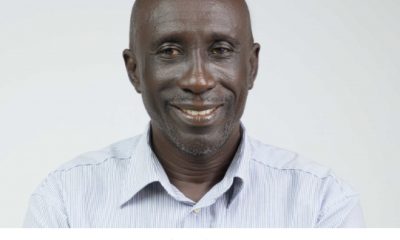
 ACADEMICS1 year ago
ACADEMICS1 year agoA History of Biu” (2015) and The Lingering Bura-Pabir Question (1)
-

 Opinions1 year ago
Opinions1 year agoTinubu,Shettima: The epidemic of economic, insecurity in Nigeria
-

 Politics3 weeks ago
Politics3 weeks ago2027: Why Hon. Midala Balami Must Go, as Youths in Hawul and Asikira/Uba Federal Constituency Reject ₦500,000 as Sallah Gift





